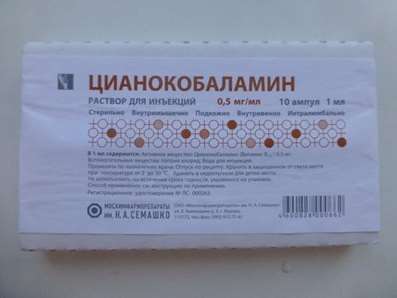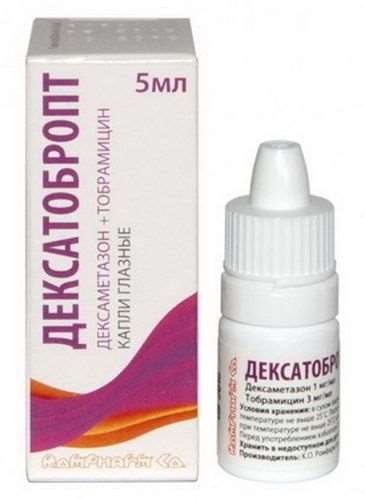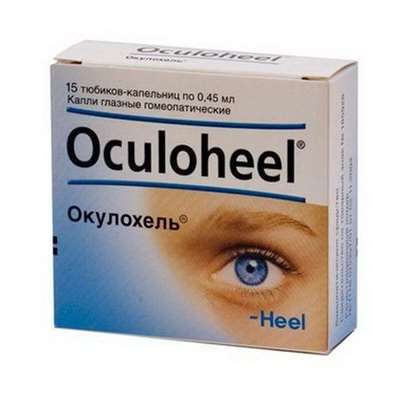Instruction for use: Atropine (Atropinum)
I want this, give me price
chemical name
8-Methyl-8-azabicyclo [3.2.1] oct-3-yl ester of endo (±) -alfa- (hydroxymethyl) benzeneacetic acid (as sulfate)
Pharmacological group
M Cholinolytics
Ophthalmic tools
The nosological classification (ICD-10)
G21 Secondary parkinsonism
Parkinson's Drug, Parkinsonism, symptomatic Parkinsonism, The lesions of the extrapyramidal system, Parkinson's syndrome
H16 Keratitis
Adenoviral keratitis, Bacterial keratitis, Spring keratitis, Deep keratitis without epithelial lesion, Deep keratitis without epithelial damage, discoid keratitis, Outline keratitis, keratitis rosacea, Keratitis with corneal destruction, Superficial keratitis, punctate keratitis, Traumatic keratitis, Superficial punctate keratitis
H20 Iridocyclitis
recurrent iritis, sympathetic iridocyclitis, Sluggish posterior uveitis, Sluggish posterior uveitis, Posterior uveitis, the posterior segment of the eye Iridocyclitis, Iridocyclitis and other uveitis, Irit, Keratoiridotsiklit, Acute iritis, uveitis, cycle of Acute iridocyclitis, Acute non-infectious uveitis
H20.9 Iridocyclitis Unspecified
Iridocyclitis, Diffuse posterior uveitis, keratouveit, Uveitis middle or rear portion of the eye, Sight-threatening uveitis middle or rear portion of the eye,keratouveitis, Anterior uveitis, Flaccid anterior uveitis, Endogenous uveitis, Inflammation of the ciliary body, Uveitis anterior portion of the eyeball, sympathetic uveitis
H30.9 chorioretinal inflammation, unspecified
Choroiditis, myopic chorioretinitis, Violation of choroidal circulation, Central retinitis
H34.1 Central retinal arterial occlusion
Occlusion of the central retinal artery, Spasm of the central retinal artery, Thromboembolism central retinal artery, Embolism of central retinal artery, Acute occlusion of the central retinal artery
H599 * Diagnosis / eye disease diagnostics
Angioscopy iris, Gonioscopy, Diagnosis in Ophthalmology, Differential diagnosis of the type of injection of the eyeball, A study of the fundus, A study of the fundus and lens, Control of the rear segment of the eye state, mydriasis, Examination of the retina during surgery, Examination of the retina after surgery, Definition of manifest refraction, Determination of refraction, Determination of refraction using skiascopy, Ophthalmic diagnostics, funduscopy, pupil dilation, Creation of mydriasis, Creating cycloplegic, Fluorescein angiography of retinal vessels, electroretinography
I44 Atrioventricular [atrioventricular] blockade and blockade of the left bundle [Hiss]
AV block, The syndrome of Morgagni-Adams-Stokes, Adams-Stokes attack, heart block
I45.5 Other specified heart block
blockade interatrial, sinus bradycardia, sinoatrial blockade
I46 Cardiac arrest
Asystole
J38.5 Spasm of the larynx
laryngism
J40 Bronchitis, not specified as acute or chronic
wheeze bronchitis, Allergic bronchitis, Bronchitis asthma, Rinotraheobronhit, Asthmatic bronchitis, Bacterial bronchitis, Bronchitis, Bronchitis smoker, Inflammation of the lower respiratory tract, bronchi disease, Qatar smoker, smokers Cough, Cough in inflammatory diseases of the lung and bronchus, Violation of bronchial secretions, Violation of the functions of the bronchi, Acute bronchitis, Subacute bronchitis, tracheobronchitis, Chronic lung disease
J45 Asthma
Asthma physical effort, status asthmaticus, Bronchial asthma, Asthma lung flow, Bronchial asthma with obstruction of sputum discharge, Bronchial asthma heavy currents, Bronchial asthma physical effort, hypersecretory asthma, Hormone-dependent form of bronchial asthma, Relief of asthma attacks in bronchial asthma, Non-allergic asthma, nocturnal asthma, Exacerbation of asthma, Asthma attacks, Endogenous forms of asthma, Night asthma, Cough with bronchial asthma
J98.8.0 * Bronchospasm
Bronchospasm in bronchial asthma, Bronchospasm when exposed to an allergen, bronchospastic reactions, bronchospastic status, bronhospastichesky syndrome, Diseases accompanied by bronchospastic syndrome, reversible bronchospasm, spasmodic cough
K11.7.0 * Hypersalivation
Hypersecretion salivary glands, ptyalism, Sialoreya
K25 Gastric ulcer
Helicobacter pylori, Pain syndrome in gastric ulcer, Pain syndrome in gastric ulcer and duodenal ulcer, Inflammation of the gastric mucosa, Inflammation of the gastrointestinal mucosa, Benign gastric ulcer, The disease of the stomach and duodenum, asotsiirovannoe with Helicobacter pylori, Aggravation gastroduodenita on the background of peptic ulcer, Exacerbation of peptic ulcer, The aggravation of gastric ulcer, The organic gastrointestinal disease, Peptic ulcer of the stomach and duodenum, Postoperative gastric ulcer,Recurrent ulcers, Symptomatic gastric ulcers, Chronic inflammatory disease of the upper gastrointestinal tract, associated with Helicobacter pylori,Helicobacter pylori eradication, Erosive and ulcerative lesions of the stomach, Erosive lesions of the stomach, The erosion of the gastric mucosa, Peptic ulcer disease, Stomach ulcer, Gastric lesion,Ulcerative lesions of the stomach, Symptomatic ulcers of the stomach and duodenum
K26 Duodenal Ulcer
Pain with duodenal ulcer, Pain syndrome in gastric ulcer and duodenal ulcer, The disease of the stomach and duodenum, asotsiirovannoe with Helicobacter pylori, Exacerbation of peptic ulcer, The worsening of duodenal ulcer, Peptic ulcer of the stomach and duodenum, Relapse of duodenal ulcers, Symptomatic ulcers of the stomach and duodenum, Helicobacter pylori eradication, Erosive and ulcerative lesions of the duodenum, Erosive-ulcerative lesions of duodenal ulcers associated with Helicobacter pylori, Erosive lesions of the duodenum, Duodenal ulcer, Ulcerative lesions of the duodenum
K31.3 pilorospazme, not elsewhere classified
Spasm of smooth muscle in diseases of the digestive tract, Spasms of the digestive tract smooth muscle, stomach Cramps, Spasms of the pylorus, Spastic condition of the gastrointestinal tract, pilorospazme, pyloric spasm
K58 Irritable Bowel Syndrome
Irritable bowel syndrome, Colitis spastic, Irritable bowel syndrome, Irritable bowel syndrome is a thin, irritable bowel syndrome, colon irritation syndrome, Symptoms of irritable bowel, Irritation of the stomach, Irritation of the intestinal mucosa, Irritated colon
K59.8.1 * intestines Dyskinesia
Pain smooth muscle spasm, Pain spasm of smooth muscles (renal and biliary colic, intestinal spasms, dysmenorrhea), Pain spasm of smooth muscles of internal organs, Pain spasm of smooth muscles of internal organs (kidney and biliary colic, intestinal spasms, dysmenorrhea), intestinal hypomotility, Hypotonic dyskinesia of the colon, GIT Dyskinesia, Dyskinesia gastrointestinal atony with events,colon Dyskinesia,Gastrointestinal spasm, Intestinal colic, Colic in infants, Spastic bowel dyskinesia, Spastic colon dyskinesia, Baby colic
K80 cholelithiasis [cholelithiasis]
gallstone ileus, Bile lithogenicity, gallstone disease, cholecystolithiasis, Cholesterol gallstones, cholangiolithiasis, Cholelithiasis, The attack of gallstone disease,cholelithiasis, Cholesterol gallstones in the gallbladder, Gallstones
K80.5 stones of bile duct without cholangitis or cholecystitis
Obstruction of common bile duct, Stones of the common bile duct, biliary colic, Colic liver, Hepatic colic, Cholesterol gallstones in the common bile duct
K81 Cholecystitis
acute cholecystitis, chronic cholecystitis, Empyema of the gall bladder, holetsistopatii, Holetsistogepatit,Cholecystitis, obstructive cholecystitis
K82.8.0 * Dyskinesia of the gallbladder and biliary tract
Biliary obstruction, Biliary reflux gastritis, Biliary reflux esophagitis, biliary sludge, Pain smooth muscle spasm, Pain spasm of smooth muscles (renal and biliary colic, intestinal spasms, dysmenorrhea), Pain spasm of smooth muscles of internal organs, Pain spasm of smooth muscles of internal organs (kidney and biliary colic, intestinal spasms, dysmenorrhea), Gipermotornaya biliary dyskinesia, Hypokinesia of the gall bladder, Hypokinetic dyskinesia of the gallbladder, Biliary dyskinesia, Dyskinesia of the gallbladder,Dyskinesia of biliary tract, biliary colic, Bile reflux,Violation of bile secretion, Violation of the outflow of bile, Subacute and chronic diseases of the biliary tract, The spasm of the biliary tract, Biliary tract spasm, Spastic biliary dyskinesia, Spasmodic dyskinesia of the gallbladder, Spastic condition of the gastrointestinal tract
K94 * Diagnosis of gastrointestinal diseases
Liver-spleen scan is, The visualization of the liver using invasive methods, Isotope hepatoscintigram, Celiocentesis, examination of the liver, Magnetic resonance imaging of the liver, Computed tomography of the liver, Esophageal manometry, Anoscopy, Visualization of biliary tract, liver ultrasound visualization, Gastroscopy,degassing bowel before diagnostic studies, degassing intestine before X-rays, Diagnosis of the gastrointestinal tract, Diagnosis of bleeding from the small intestine, Diagnosis of focal lesions of the liver, Diagnosis secretory capacity and gastric acid-function, Diagnostic procedures on the colon, duodenal intubation, duodenoscopy, Instrumental examinations of the abdominal cavity, Intraoperative cholangiography, Irrigoscopy, The study of gastric secretion, GI study, Investigation of acid-forming function of the stomach, The study of gastric secretory function,Colonoscopy, Monitoring the effectiveness of lithotripsy, Determining the degree of hypersecretion of duodenal ulcer, Preparation for diagnostic tests, Preparing to X-ray and instrumental methods of investigation of the abdominal cavity, Preparing to X-ray and ultrasound of the abdominal cavity, Preparing to X-ray or endoscopic gastrointestinal investigations, Preparing to X-ray study of the gastrointestinal tract with contrast, Preparing to X-ray study of the gastrointestinal tract with barium, Preparing to X-ray examination and ultrasound of the abdomen, Preparing to X-ray examination and ultrasound of the abdomen, Preparation for ultrasound and X-ray examination of the abdominal cavity, Preparation for endoscopic examination of the lower large intestine,Preparation for endoscopic or X-ray examination of the lower intestine, Prepare to lower GI endoscopy, Preparation of the colon to the instrumental and radiological investigations, Preparation of the colon to the x-ray and endoscopy, sigmoidoscopy, rectoscopy, GI Radiography, X-ray diagnosis of esophageal achalasia,Radiology gastrointestinal diseases, Radiology of the digestive tract, Rentgenocontrast study biliary tract, Rentgenocontrast study GI, X-ray diagnosis of the gastrointestinal tract, X-ray gastrointestinal studies, X-ray examination of the duodenum and gall bladder, X-ray examination of the stomach, X-ray examination of the biliary tract and gall bladder, X-ray study of the gastrointestinal tract, X-ray examination of the esophagus, retrograde cholangiopancreatography, Endoscopic Retrograde pankreatoholangiorentgenografiya, Sonography of the digestive tract, hepatosplenography, Ultrasonography of the abdomen, Functional X-ray diagnostics for diseases of the stomach,Functional X-ray diagnosis with bowel diseases,cholangiography, Cholangiography in cholelithiasis, cholangiopancreatography, cholecystography,esophagoscopy, Endoscopic retrograde pancreato, Endoscopic retrograde cholangiopancreatography, Endoscopic intervention, Endoscopic examinations of the digestive system, Endoscopic examination of the lower large intestine, GI Endoscopy, endoscopy, ERCP, Panendoskopiya
N23 Renal colic unspecified
Pain in renal colic, Pain smooth muscle spasm, Pain spasm of smooth muscles (renal and biliary colic, intestinal spasms, dysmenorrhea), Pain spasm of smooth muscles of internal organs, Pain spasm of smooth muscles of internal organs (kidney and biliary colic, intestinal spasms, dysmenorrhea), renal Colic, ureteral colic, Renal colic, Renal colic with urolithiasis, Kidney disease,Spasm of smooth muscle in diseases of the urinary system, The spasm of the urinary tract, The spasm of the ureter, The spasm of the ureters, Spasms of the urinary tract, Spasms of the urinary tract
R00.1 Bradycardia, unspecified
bradyarrhythmias, bradycardia
R09.3 Sputum
Bronchial asthma with obstruction of sputum discharge, Isolation of viscous mucus, viscous mucus, sputum hyperproduction, Hypersecretion of bronchial glands, Thick mucus, Obstruction of the bronchi of the mucous plug, The difficulty sputum discharge, Shortness of sputum, Shortness of sputum in acute and chronic respiratory diseases, Difficult expectoration, Cough with difficult expectoration of viscous, Cough with difficult expectoration,increased sputum viscosity,Poor expectoration,Trudnootdelyaemoy viscous mucus,sputum, Trudnootdelyaemoy bronchial secretion, Trudnootdelyaemoy viscous secret, Inflammation of the upper respiratory tract illness with difficult sputum
R10.4 Other and unspecified abdominal pain
Abdominal pain, Gastrointestinal spasm, intestinal colic, Colic in infants, The feeling of fullness, Resi abdominal, Spasm of smooth muscle in diseases of the digestive tract, The spasm of the biliary tract, Biliary tract spasm, enterospasm, Spasm of the digestive tract, Spasms of the digestive tract smooth muscle, stomach Cramps, gastrointestinal spasms, Spastic condition of the gastrointestinal tract,intestinal tenesmus, Feeling of fullness, Baby colic
S05.9 Injury of unspecified part of the eye and orbit
eye injury, Superficial corneal injury
T44.0 poisoning cholinesterase inhibitors
Intoxication anticholinesterase agents,An overdose of anticholinesterase agents
T44.1 Poisoning by other parasympathomimetic [cholinergic] agents
T56.9 Toxic effect of unspecified metal
Poisoning rare earth metals, Poisoning with salts of heavy metals, Poisoning and heavy rare earths, Heavy metal poisoning
T57.1 Toxic effect of phosphorus and its compounds
Organophosphate poisoning, Poisoning agents fosforotravlyayuschimi
Z01.2 Dental examination
tooth Extirpation, Anesthesia of mucous membranes, Dental intervention
Z100.0 * Anesthesiology and premedication
nasogastric intubation, The relaxation of skeletal muscles, Controlled breathing under anesthesia, Anesthesia, Anesthesia in ENT practice, Anaesthesia in Dentistry, Hypotension during spinal anesthesia, ataralgesia, Basic anesthesia, Fast anesthesia, Introduction to anesthesia, Induction, inhalation anesthesia, Inhalation anesthesia for large and small surgery, Induction and maintenance of general anesthesia, intraligamentarnaya anesthesia, tracheal intubation, caudal anesthesia, Caudal blockade, mixed anesthesia, Short-term anesthesia, Short-term infiltration anesthesia in surgery, Short-term local anesthesia, Spinal anesthesia, Local anesthesia, Local infiltration anesthesia, Local surface anesthesia, monokomponentny anesthesia, anesthesia, Neingalyatsionnyh anesthesia for operative delivery, Immediate pain relief, general anesthesia, General anesthesia with short-term surgical interventions, General anesthesia, Period premedication, Surface anesthesia in ophthalmology, Maintenance of anesthesia, anocithesia, conduction anesthesia, Regional anesthesia, mixed anesthesia, Spinal anesthesia, spinal anesthesia, Spinal anesthesia, permeation anesthesia, epidural anesthesia, IVL, Artificial hibernation, Short-term muscle relaxation, Miorelaxation, Miorelaxation during mechanical ventilation, Miorelaxation during surgery, Miorelaxation in operations, Miorelaxation during mechanical ventilation, Excitation before surgery, cardioplegia, Preoperative period
CAS code 51-55-8
Characteristics substance Atropine
Alkaloid contained in plants of the nightshade family (Solanaceae):. Belladonna (Atropa Belladonna L.), henbane (Hyoscyamus L. niger), different types of Datura (Datura stramonium L.), etc. In medical practice, atropine sulfate used.
Atropine Sulfate - a white crystalline or granular powder, odorless. Easily soluble in water and ethanol, almost insoluble in chloroform and ether.
Pharmacology
holinoliticheskoe.
Does m-cholinergic receptors. Causes mydriasis, paralysis of accommodation, increased intraocular pressure, tachycardia, dry mouth. It inhibits secretion of bronchial and stomach, sweat glands. It relaxes the smooth muscles of the bronchi, the gastrointestinal tract, bile and urinary systems - antispasmodic effect. Turn (large doses) CNS. After the on / in a maximum effect seen after 2-4 min after oral administration (in the form of droplets) in 30 min. In the blood 18% bound to plasma proteins. It passes through the BBB. Excreted by the kidneys (50% - unchanged).
Application of the substance Atropine
Gastric ulcer and duodenal ulcer, pilorospazm, cholelithiasis, cholecystitis, acute pancreatitis, hypersalivation (parkinsonism, poisoning by salts of heavy metals in dental interventions), irritable bowel syndrome, intestinal colic, biliary colic, renal colic, symptomatic bradycardia (sinus sinoatrialnaya blockade proximal AV block, ventricular electrical activity without pulse, asystole) for preoperative sedation; m-poisoning holinostimulyatorami and anticholinesterase drugs (reversible and irreversible action), including organophosphorus compounds; When X-ray gastrointestinal studies (if necessary, reduce the tone of the stomach and intestines), bronchial asthma, bronchitis with overproduction of mucus, bronchospasm, laryngospasm (prevention).
In ophthalmology. To improve pupil achievement and paralysis of accommodation (the true definition of refraction, fundus), the creation of functional rest of inflammatory diseases and injuries of the eye (iritis, iridocyclitis, choroiditis, keratitis, thrombosis and spasm of the central retinal artery).
Contraindications
Hypersensitivity, for ophthalmic forms - closure glaucoma (including for suspected it), open-angle glaucoma, keratoconus, children's age (1% solution - up to 7 years).
Restrictions apply
Diseases of the cardiovascular system, in which an increase in heart rate may not be desirable: atrial fibrillation, tachycardia, congestive heart failure, coronary artery disease, mitral stenosis, hypertension, acute bleeding; hyperthyroidism (may increase tachycardia); fever (possibly further increase as a result of the suppression of the activity of the sweat glands); reflux esophagitis, hiatal hernia, combined with reflux esophagitis (decreased motility of the esophagus and stomach and relaxing the lower esophageal sphincter can help slow down gastric emptying and increased gastroesophageal reflux through the sphincter with impaired function); Gastrointestinal diseases accompanied by obstruction: esophageal achalasia, pyloric stenosis (possibly reduced motility and tone, leading to obstruction and delay gastric emptying); intestinal atony in the elderly or debilitated patients (perhaps the obstruction), paralytic ileus (obstruction may develop); disease with elevated intraocular pressure: the closure (mydriatic effect, leading to an increase in intraocular pressure, can cause an acute attack) and open-angle glaucoma (mydriatic effect may cause a slight increase in intraocular pressure may require correction of therapy); ulcerative colitis (higher doses may inhibit intestinal motility, increasing the chance of paralytic ileus, moreover, possible manifestation or exacerbation of severe complications such as toxic megacolon); dry mouth (long-term use may cause a further increase in the severity of xerostomia); hepatic insufficiency (decrease in metabolism) and renal failure (risk of side effects due to decreased excretion); chronic lung disease, especially in young children and debilitated patients (decrease bronchial secretion can lead to thickening of secretions and blockages in the bronchi); myasthenia gravis (a condition may deteriorate due to the inhibition of acetylcholine action); prostatic hypertrophy without obstruction of the urinary tract, urinary retention, or predisposition to it or diseases accompanied by obstruction of the urinary tract (including bladder neck due to prostatic hypertrophy); preeclampsia (hypertension may increase); brain damage in children, cerebral palsy, Down syndrome (reactions to anticholinergic drugs increased). For ophthalmic forms (optional) - age over 40 years (risk of manifestation of undiagnosed glaucoma), adhesions of the iris.
Pregnancy and breast-feeding
Category effects on the fetus by FDA - C.
Side effects
systemic effects
From the nervous system and sensory organs: headache, dizziness, insomnia, confusion, euphoria, hallucinations, mydriasis, paralysis of accommodation, violation of tactile perception.
Cardio-vascular system and blood (blood, hemostasis): sinus tachycardia, aggravation of myocardial ischemia due to excessive tachycardia, ventricular tachycardia and ventricular fibrillation.
From the digestive tract: dry mouth, constipation.
Other: fever, atony bowel and bladder, urinary retention, photophobia.
Local effects: transient tingling and increased intraocular pressure; long-term use - irritation, redness of the skin age; hyperemia and conjunctival edema, conjunctivitis development, mydriasis and paralysis of accommodation.
When administered in single doses <0.5 mg possible paradoxical reactions associated with the activation of the parasympathetic part of the autonomic nervous system (aetiology, AV conduction slowing).
Interaction
It weakens the effect of M-cholinomimetics and anticholinesterases funds. Drugs with anticholinergic activity enhance the effect of atropine. When concomitantly with antacids containing Al3 + and Ca2 +, atropine absorption from the gastrointestinal tract is reduced. Diphenhydramine and promethazine enhance the effect of atropine. The likelihood of systemic side effects increases the tricyclic antidepressants, phenothiazines, amantadine, quinidine, antihistamines and other drugs with m-anticholinergic properties. Nitrates increase the likelihood of increased intraocular pressure. Atropine changes the absorption parameters of mexiletine and levodopa.
Routes of administration
Inside, in / in, in / m, n / a, conjunctival, or subkonyunktivalno parabulbarno by electrophoresis. Ointment lay for ever.
Precautions
is ineffective and not recommended for AV blockade distal type (with a wide range of QRS) atropine.
When instillation into the conjunctival sac is necessary to press the lower lacrimal point in order to avoid falling into the nasopharynx of the solution. When subconjunctival or parabulbarnom to reduce tachycardia advisable to appoint validol.
Intensely pigmented iris is more resistant to dilatation and to achieve the effect it is necessary to increase the concentration and frequency of administration should therefore be wary of mydriatics overdose.
Pupil dilation can provoke an acute attack of glaucoma in people older than 60 years and people with hyperopia, predisposed to glaucoma due to the fact that they have a shallow anterior chamber.
It should warn patients that driving a car for at least 2 hours after ophthalmic research is prohibited.

 Cart
Cart





